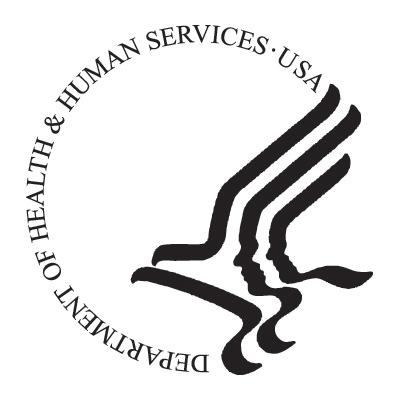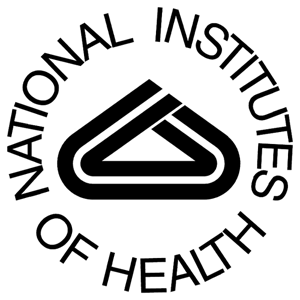 |
Weight and Waist Measurement
Tools for Adults
Today, 66 percent of adults in the United States are considered overweight or obese. How do you know if you are among them? Two simple measures, body mass index (BMI) and waist circumference, provide useful estimates of overweight, obesity, and body fat distribution.
Health care providers also use BMI and waist circumference measures to assess a person’s risk of developing diabetes, heart disease, or other health problems. This fact sheet tells you how to measure your BMI and waist circumference, and what these measures mean for your health.
|
| Body Mass Index
|
BMI measures your weight in relation to your height, and it is closely associated with measures of body fat. You can calculate your BMI using this formula.

For example, for someone who is 5 feet, 7 inches tall and weighs 220 pounds, the calculation would look like this:

A BMI of 18.5 to 24.9 is considered to be in the healthy range. A person with a BMI of 25 to 29.9 is considered overweight, and a person with a BMI of 30 or more is considered obese.
You can also find your weight group on the chart below. The chart applies to all adults. The higher weights in the healthy range apply to people with more muscle and bone, such as men. Even within the healthy range, weight gain could increase your risk for health problems.
Because BMI does not show the difference between fat and muscle, it does not always accurately predict when weight could lead to health problems. For example, someone with a lot of muscle (such as a body builder) may have a BMI in the overweight or obese range, but still be healthy and have little risk of developing diabetes or having a heart attack.
Table 1: Body Mass Index

BMI also may not accurately reflect body fatness in people who are very short (under 5 feet) and in older people, who tend to lose muscle mass as they age. And it may not be the best predictor of weight-related health problems among some racial and ethnic groups, such as African-American and Hispanic-American women. But for most people, BMI is a reliable way to tell if your weight is putting your health at risk.
Top
|
| Waist
Circumference |
Excess weight as measured by BMI is not the only risk to your health. Where excess fat is located on your body may be another risk. If you carry fat mainly around your waist, you are more likely to develop health problems than if you carry fat mainly in your hips and thighs. This is true even if your BMI falls within the normal range. Women with a waist measurement of more than 35 inches or men with a waist measurement of more than 40 inches may have a higher disease risk than people with smaller waist measurements because of where their fat lies.
To measure your waist circumference, place a tape measure around your bare abdomen just above your hip bone. Be sure that the tape is snug (but does not compress your skin) and that it is parallel to the floor. Relax, exhale, and measure your waist.
Top
|
How does overweight or obesity affect my
health?
|
Extra weight can put you at higher risk for these health problems:
- type 2 diabetes (high blood sugar)
- high blood pressure
- heart disease and stroke
- some types of cancer
- sleep apnea (when breathing stops for short periods during sleep)
- osteoarthritis (wearing away of the joints)
- gallbladder disease
- liver disease
- irregular menstrual periods
Top
|
What should I do if my BMI or waist
measurement is too high?
|
If your BMI is between 25 and 30 and you are otherwise healthy, try to look into healthy ways to improve your eating and physical activity habits.
Talk to your health care provider about losing weight if:
- Your BMI is 30 or above, or
- Your BMI is between 25 and 30 and you have:
Two or more of the health problems listed above or
A family history of heart disease or diabetes, or
- Your waist measures over 35 inches (women) or 40 inches (men)—even if your BMI is less than 25—and you have:
Two or more of the health problems listed above or
A family history of heart disease or diabetes.
Top
|
Additional Reading |
Clinical Guidelines on the Identification, Evaluation, and Treatment of Overweight and Obesity in Adults: The Evidence Report. September 1998. This National Heart, Lung, and Blood Institute report targets primary care practitioners and provides evidence for the effects of treatment on overweight and obesity.
Active at Any Size. October 2006. Available from WIN.
Choosing a Safe and Successful Weight-loss Program. April 2008. Available from WIN.
Do You Know the Health Risks of Being Overweight? October 2007. Available from WIN.
Healthy Eating and Physical Activity Across Your Lifespan: Better Health and You. January 2008. Available from WIN.
Physical Activity and Weight Control. January 2007. Available from WIN.
Tips to Help You Get Active. January 2006. Available from WIN.
Understanding Adult Obesity. November 2008. Available from WIN.
Weight-loss and Nutrition Myths. August 2006. Available from WIN.
Top
|
| |
Weight-control
Information Network
1 WIN Way
Bethesda, MD 20892–3665
Phone: (202) 828–1025
Toll-free number: 1–877–946–4627
Fax: (202) 828–1028
Email: win@info.niddk.nih.gov
Internet: http://www.win.niddk.nih.gov
The Weight-control Information Network (WIN) is a service of the National Institute of Diabetes and Digestive and Kidney Diseases (NIDDK) of the National Institutes of Health, which is the Federal Government’s lead agency responsible for biomedical research on nutrition and obesity. Authorized by Congress (Public Law 103–43), WIN provides the general public, health professionals, the media, and Congress with up-to-date, science-based health information on weight control, obesity, physical activity, and related nutritional issues.
Publications produced by WIN are reviewed by both NIDDK scientists and outside experts.
This publication is not copyrighted. WIN encourages users of this fact sheet to duplicate and distribute as many copies as desired.
|
| |
NIH Publication No. 04–5283
November 2008
|
|




